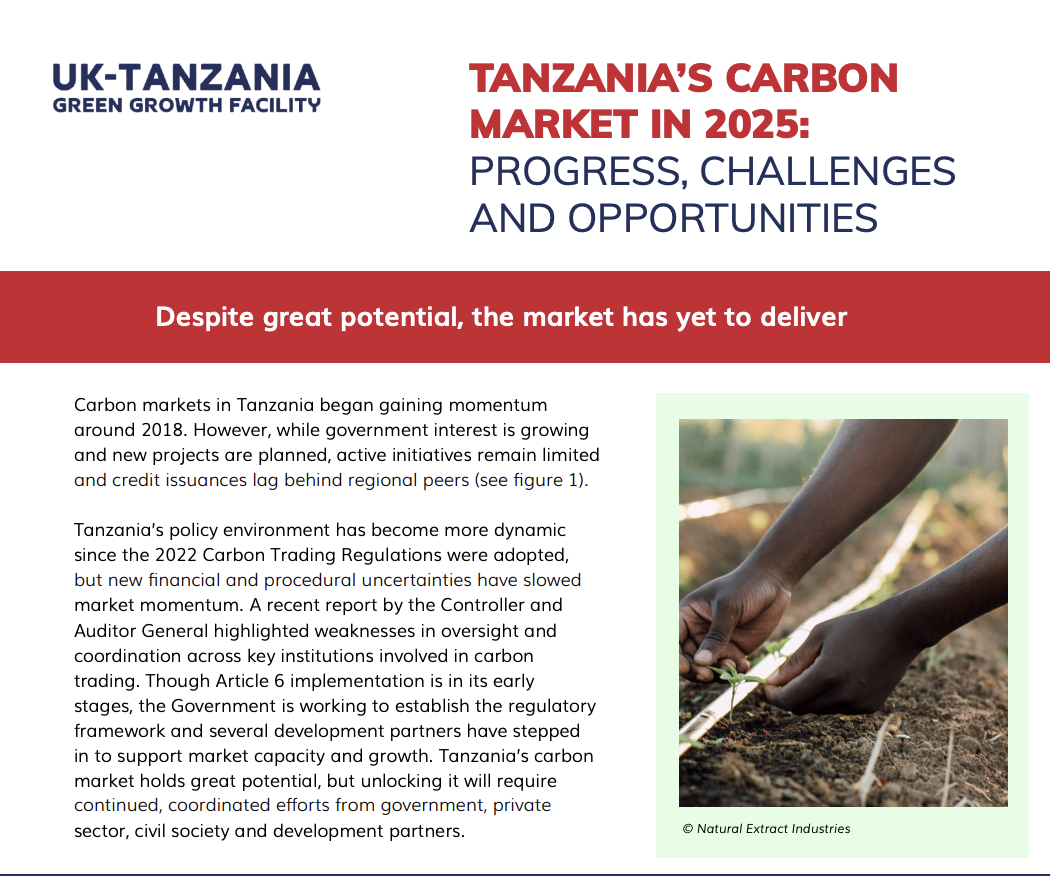
Dar es Salaam
Tanzania’s carbon market is at a pivotal moment, with great potential for growth tempered by persistent regulatory and procedural challenges. A recent report, “Tanzania’s Carbon Market in 2025,” reveals a market that, while growing, has yet to realize its full potential compared to regional peers.
The market’s foundation was laid in 2008 with the issuance of its first carbon credits, but momentum truly began to build a decade later with a significant increase in voluntary carbon standards activity. To date, 8.3 million carbon credits have been issued from 23 projects . The market is heavily skewed towards the voluntary market, with the vast majority (82%) of credits issued under Verra’s Verified Carbon Standard (VCS) . In contrast, credits from the Clean Development Mechanism (CDM) have constituted a mere 3%.
Despite this progress, Tanzania’s credit issuances lag significantly behind neighboring countries. The report highlights a stark comparison: Kenya has issued 84.0 million credits, Uganda 40.1 million, and Ethiopia 13.6 million, while Tanzania’s total is 7.7 million .
Regulatory uncertainty is identified as a major bottleneck. While the 2022 Carbon Trading Regulations, amended in 2023, have created a framework for government oversight, they have also introduced new financial and procedural uncertainties. These regulations require government approval for all carbon trading activities, mandate benefit-sharing with local communities, and impose fees on credit revenues. Furthermore, a report from the Controller and Auditor General has raised concerns about weaknesses in oversight and coordination among the institutions involved in carbon trading. The recent elevation of the National Carbon Monitoring Centre (NCMC) to a government authority in April 2025, with an expanded mandate to oversee carbon trading, is a step towards strengthening the institutional framework, though this new body is still in the process of being established .
The market is also characterized by a concentration of project types and developers . REDD+ projects dominate, accounting for 61.2% of all issued credits, followed by clean cooking projects at 23.6%. Other categories like afforestation, reforestation, and revegetation (ARR), renewable energy, and waste management make up a smaller portion of the market. The issuance of credits has been concentrated among a small number of actors. Carbon Tanzania, the largest project developer, is responsible for 61% of total credits issued, followed by C-Quest Capital (14%) and Green Resources (9%). The report notes that several of these developers, including C-Quest Capital and Green Resources, are no longer active in the market.
On the investment front, carbon projects in Tanzania have attracted over USD 100 million in foreign investment from twelve developers. Historically, the largest investments have been in renewable energy, REDD+, and ARR projects. However, committed future investments are expected to be dominated by ARR projects, which typically have high upfront costs. Carbon credit prices vary widely, with most credits from Tanzania selling in the USD 5-10 range, though higher prices are achieved by ARR and biochar projects .
A significant development in 2025 was Tanzania’s signing of its first Article 6.2 cooperation agreement with Japan . This provides a foundation for future cooperation and allows credits from Tanzania to contribute to Japan’s Nationally Determined Contribution (NDC). However, the report highlights that the effective implementation of Article 6 remains limited, with no national framework or formal process for authorizing Internationally Transferred Mitigation Outcomes (ITMOs).
Despite the hurdles, the report points to a promising pipeline of 77 projects in the NCMC registry, many in early stages of development . The support of international partners, including the UK, Norway, and the European Union, is also playing a crucial role in building institutional capacity and strengthening the regulatory environment . The report concludes that with the right policies, partnerships, and investment, Tanzania could emerge as a leader in Africa’s carbon market, but this will require continued, coordinated efforts from all stakeholders .
